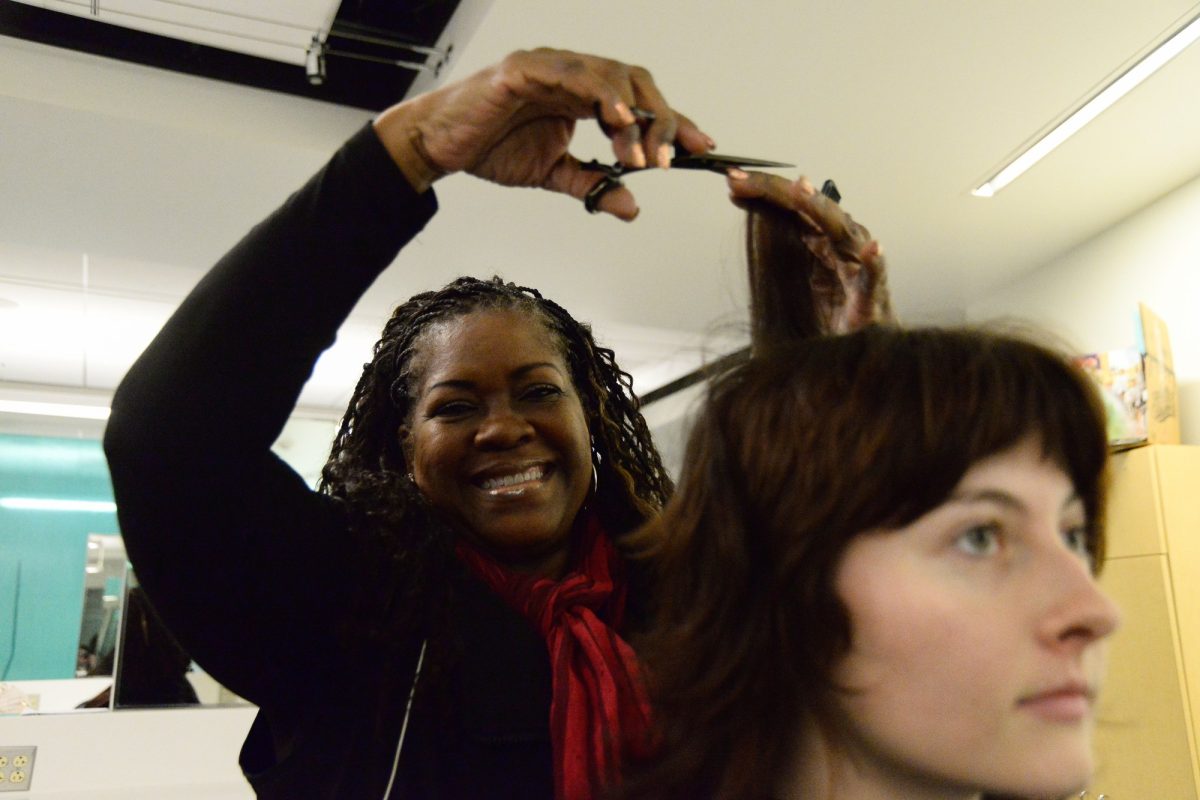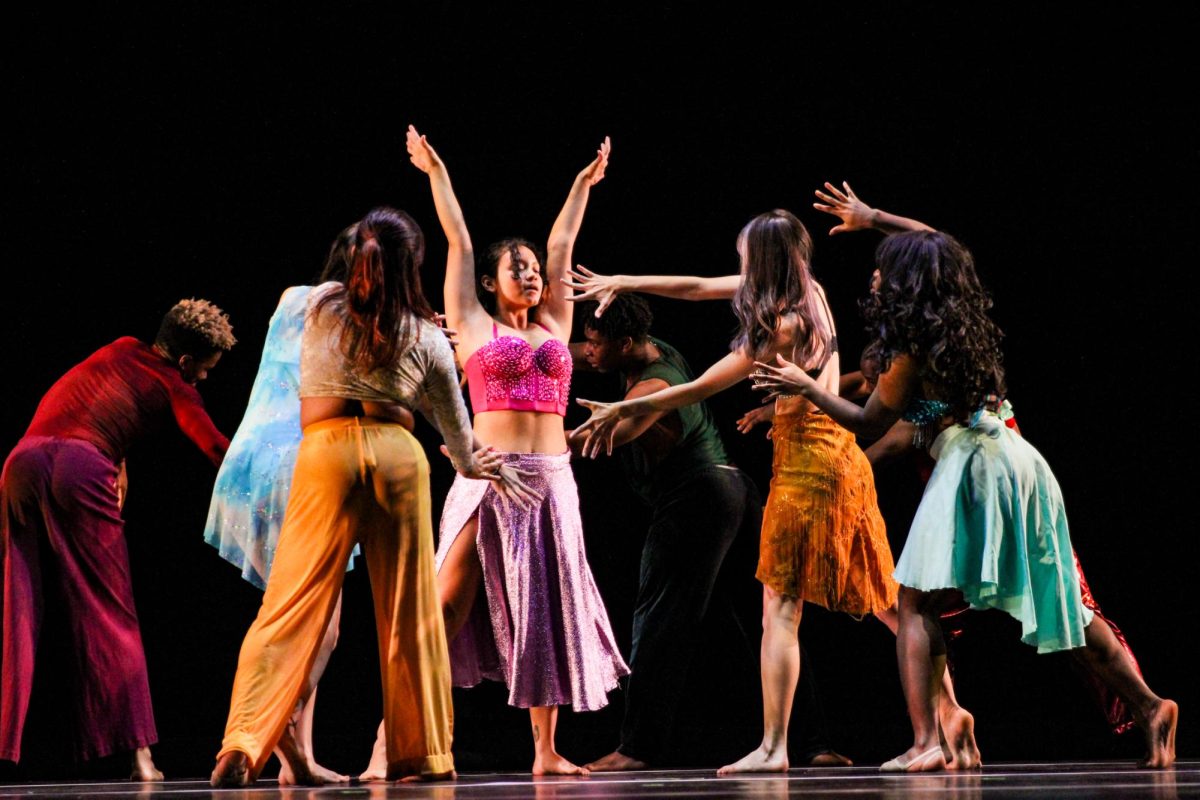Most religions stress the importance of reliance on God.
However, there is also a religion where God depends on human beings in order to thrive.
That religion is called Kabbalah, which means “receiving” or “that which is received” in Hebrew text. Kabbalah is another branch of mainstream Judaism.
“Kabbalahists believe that what people do on Earth affects the wholeness of God; he needs us to be complete,” English/anthology professor Brent Issac, said. “This is the biggest difference between Kabbalah and other religions.”
“It is also belived that people have to go through a life time of practices to be complete,” Reform Jew Robert Gilpin, 55, said.
Kabbalahists believe that people affect the 10 sefriot, which means “aspects of God.”
These 10 aspects of God are drawn out in a form of a tree, named the Tree of Life, which is also a symbol of the religion.
“One of the 10 aspects of God,” Issac said, “is Shekhinah, which is the divine imminence, the feminine side or the feminine half of God.”
“When a man and a woman are in a union on earth, Kabbalahists believe that this action brings God closer to his feminine side, which makes him complete,” Issac said.
It features the teaching of mystic knowledge, such as numerology, which plays an important role in the system of Kabbalah.
“The concept of the ten sefriot is based on numerology,” Issac said. “The ten aspects of God is drawn in the image of a body; from head to the arms, from the arms to the body, then to the legs and the genital area.”
The Kabbalah was founded by Moses DeLeon in the 1280s when he put all the mystic knowledge handed down by Rabbis together and wrote a book called The Zohar, which is the sacred book of Kabbalah.
“The whole religion is based on the Torah,” Issac said. “And Kabbalahists think that what is written in the Torah is sacred, secret knowledge of the universe that not many people know of.”
“The Torah basically tells you everything about being a Jew,” Gilpin said.
But no matter how interesting it sounds, not many Jewish people believe in this particular religion.
“There are many different kinds of Jews, like, Reform Jews, Conservative Jews and Orthodox Jews and all of them believe in Judaism,” Gilpin said. “Most of the Jews do not believe in Kabbalah.”
However, there are still a few similarities between Judaism and Kabbalah.
“Kabbalahists believe in the Sabbath like other Jews do,” Gilpin said.
To worship their God, Issac said that Kabbalahists say prayers and sing chants like other Jews do in their own churches.
“Actually, the poem that most Jews used to recite during ceremonies, which is called the Lekhah Dodi, was first writen by Kabbalahists,” Issac said. “But today, it is mostly just recited as a love poem.”
Most people had not heard of Kabbalah until recent decades, but Issac said that it has been around for a millennium.
“Similar to Medieval Catholic Mystic and Sufisim, an out branch of Islam, Kabbalah has been around for a long time,” Issac said. “But because not many people believe in it, it kind of died out.”
Until images of Madonna, Britney Spears and Demi Moore shown wearing the talisman bracelets made of red string on their wrists were published, which raised the curiousity of the public and the religion of Kabbalah started to become more and more popular again.
“I think more and more people talk about Kabbalah because they started checking it out after reading about all these celebrities believing in it,” Issac said.
But not everyone likes the idea of copying whatever the celebrities do.
“I had a boyfriend who practiced it because he really believed in it. I hate to see that Kabbalah has become more of a trendy fad,” Carly Welch arts/english major, 21, said. “It’s bad in the sense that Kabbalah, which is something so serious, has been turned into a fad.”
“Modern society especially the United States, in my opinion, has lost its values,” Alexander Katsman, business major, 23, said. “People don’t really do things based on values but based on something like fashion.”
“A few of the Kabbalah centers are located at West L.A. around the Fairfax district, which is the area of residence for a rather extensive Jewish community,” Gilpin said.
More information may be obtained at http://www.kabala.org.
“I think the comfort that people find in Kabbalah is that they are not an inheritent of the religion,” Issac said. “This religion puts the believers in the center and makes them feel that they are important, too.”
Faith Facts
Meaning “what has been handed down” or “received wisdom” in Hebrew, Kabbalah is a generic term for Jewish mystical texts compiled between the 5th and 12th centuries in Spain and the Middle East.
In Jewish communities, Kabbalah was long the exclusive preserve of devout male scholars, giving rise to the term “cabal.” It was popularized in the West in the 1960s by Philip Berg, a U.S.-born rabbi who studied Jewish mysticism in Israel.
Kabbalah teaches that Creation is made of 10 “spheres,” each of which is symbolized by a different Hebrew letter and part of the human body. With its emphasis on individual spirituality, Kabbalah has won fans of all faiths, to the dismay of Orthodox Jews who argue it cannot be divorced from dogma.
With a slew of Hollywood celebrities, The Kabbalah Center in L.A. has developed as a high profile teaching venue. In addition to classes, it sells “meditation cards” and talisman bracelets made of red string.
A core Kabbalah text is the Zohar (“Shining”), first published in Italy in 1558. According to Jewish tradition, the Zohar’s author was Shimon Bar-Yohai, a rabbi in ancient Israel who developed mystical powers while fleeing Roman occupiers.
-Source: Reuters



![Universal Pictures "Wicked," directed by Jon M. Chu, will be playing in theaters worldwide on Nov. 22. (Elliott Bullock II [The Union])](https://eccunion.com/wp-content/uploads/2024/11/wicked-poster-from-elliott-bullock-ii-1200x540.jpg)




